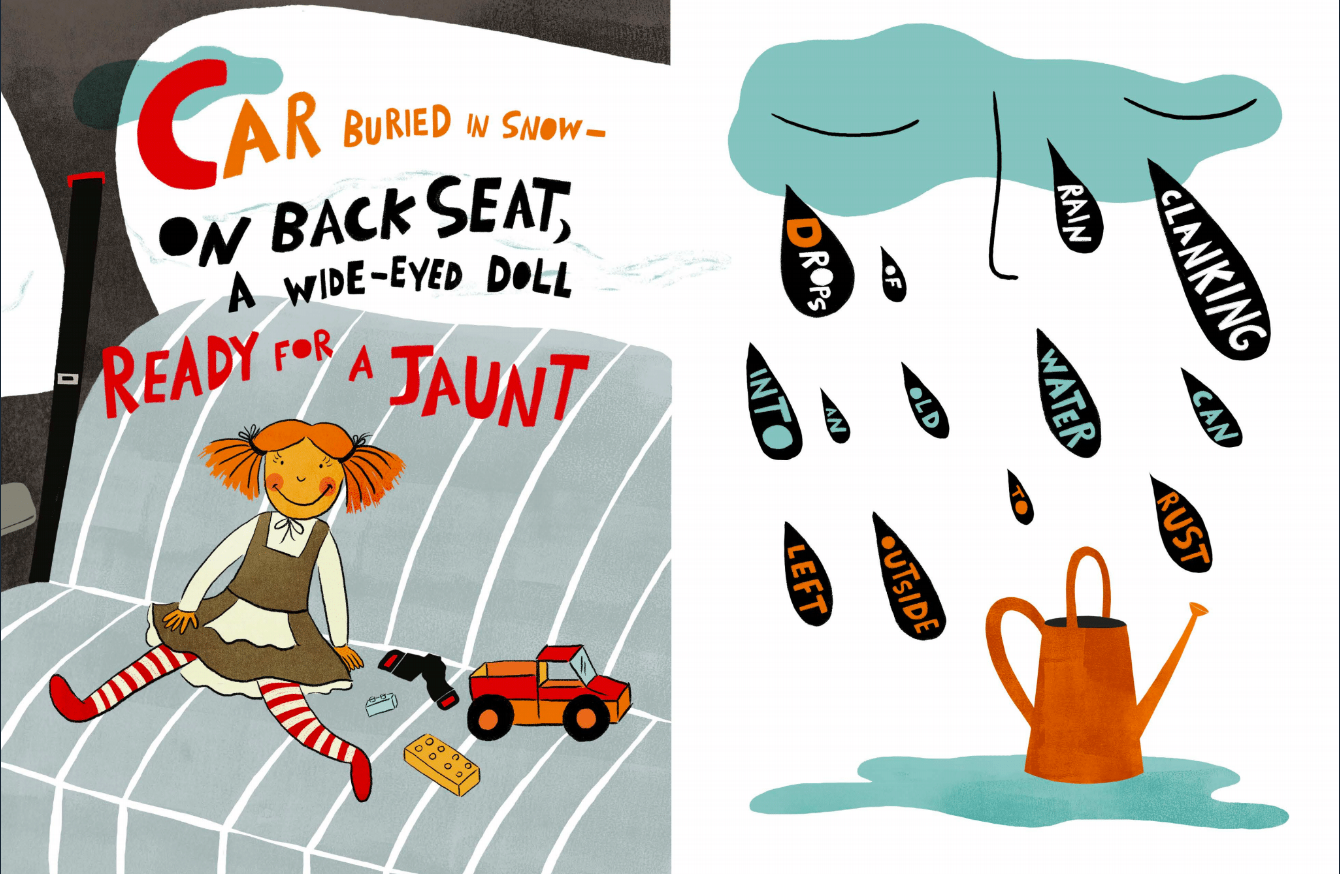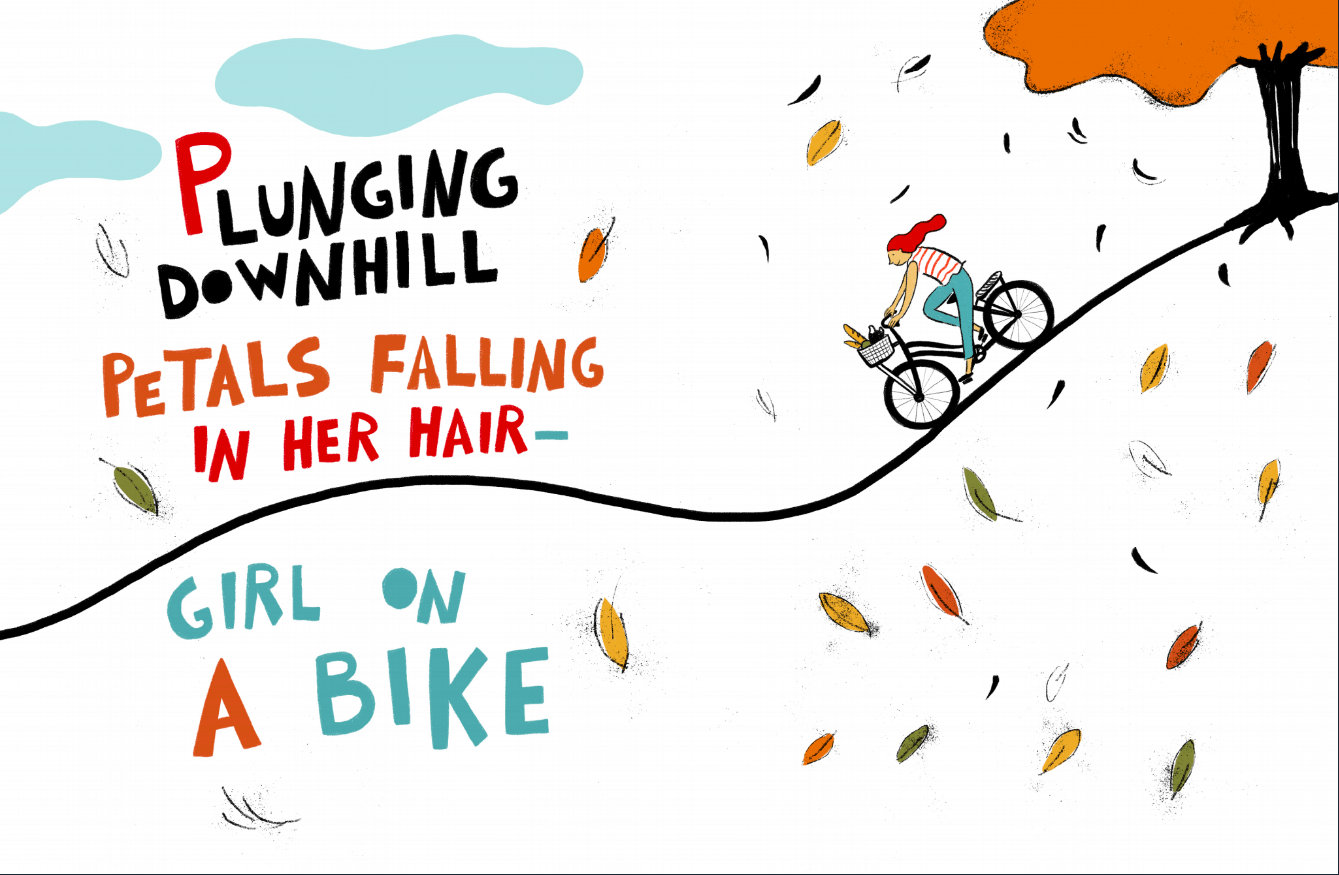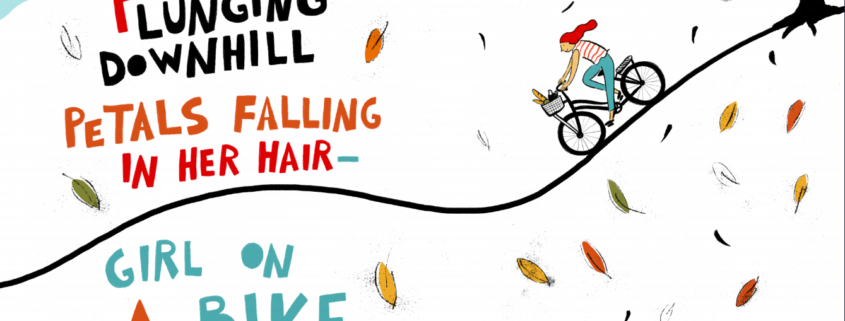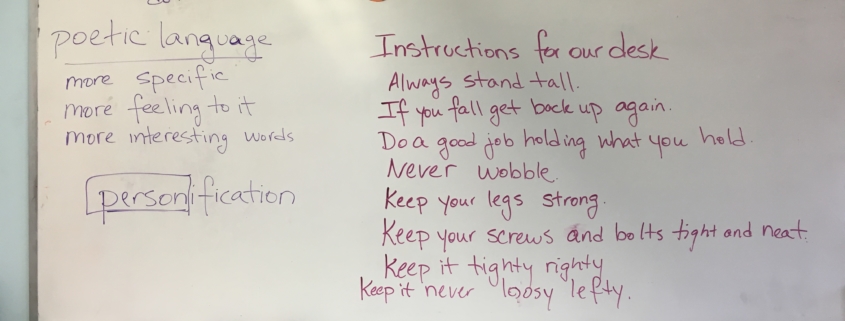
Last week I wrote about a lesson I did with two local elementary classes that began with a discussion of haiku. I thought I’d follow up today with a little more about haiku and teaching poetry.
I’ve probably already said this, but I’ll say it again: I think haiku are wonderful to share with students.
Because haiku focus on one particular haiku moment, they are wonderful for discussing and teaching close observation.
Because haiku try to give a reader an opportunity to experience the haiku moment directly, they are wonderful for discussing and teaching descriptive language and the value of using multiple senses in writing.
Because haiku are short, they are also wonderful for discussing and teaching word choice. It’s far less overwhelming to ask young writers to think carefully about a handful of words, than every word in a longer story or essay.
If you are looking for a book of haiku intended for children, you might take a look at H is for Haiku, a collection by Sydell Rosenberg, a charter member of the Haiku Society of America, illustrated by Sawsan Chilabi, and published by Penny Candy Books. The National Council of Teachers of English has selected the book as a 2019 Notable Poetry Book. Hurray! It is also a Cybils finalist in poetry. Double hurray!
The book begins with beautiful notes from both Syd and her daughter Amy Losak, who lead the project, describing what haiku do so well. Then page by page the book presents 26 haiku, one for each letter of the alphabet. Every one of them does exactly what Syd and Amy describe in their notes—they take a close look at a single resonant moment. The moments in this book will be of particular interest to children.
Here are a few of my favorites:

I love both of the poems on this spread. I can so clearly feel what it might be like to be in a car covered in snow—slightly dark and cold, but not too dark and not too cold, and there’s the doll ready to go, but the car is not, and where’s the child? In the house wondering where the doll is? Outside playing in the snow, momentarily forgetting about the doll? Just about rescue the doll or clean off the car and go on a jaunt?
In the facing haiku, I can hear the sound of the rain drops hitting the metal watering can perfectly. And how ironic that no one fills the watering can anymore, except the rain. And if it’s raining, who needs a watering can full of water?
I also love the bold, colorful graphic illustrations. Look at that doll’s face and her leg that isn’t bending quite right and the words in the raindrops that look like tears coming from the face in the sky. The images give the book a liveliness that works so well with poems that are observant snapshots of a moment.

This haiku immediately transports me to the bike. I am the girl plunging (what a fabulous word!) downhill! I can feel the petals and the wind and the slightly scary excitement of going fast.
What’s truly special about moments like these is both noticing them—noticing the doll on the backseat, the rusty watering can, the girl on a bike—and also noticing that you are noticing them. It’s that second step that’s essential for writing.
If you’re looking for ideas for sharing haiku with students, here are some activities that I have used:
Read Haiku: Read one aloud a couple of times. Have the students close their eyes: what do they see as you read? Look at two or three. How are they similar? Different?
Observe the Natural World: Go outside. Look closely at plants, animals, etc. What do you see? Hear? Smell? Feel? Take notes on observations.
Imagine the Natural World: If you can’t go outside, talk about what kind of day it is and what one might see on a day like this.
Write together: Begin with a first line that describes the day (a snowy morning, first warm day); use student observations to write the second and third lines.
Revise together: Are there any unnecessary words? Are there any words that could be more interesting?
Write individually or in pairs: Allow students to use the shared first line if they like.
Share: Make a seasonal bulletin board with all of the student haiku about the day.
For more ideas, here is an article from Teachers and Writers Magazine by Erika Luckert about using H is for Haiku in the classroom.
I hope I’ve been able to share a little of my haiku love with you.
For more Poetry Friday visit Laura Salas at Writing the World for Kids.



